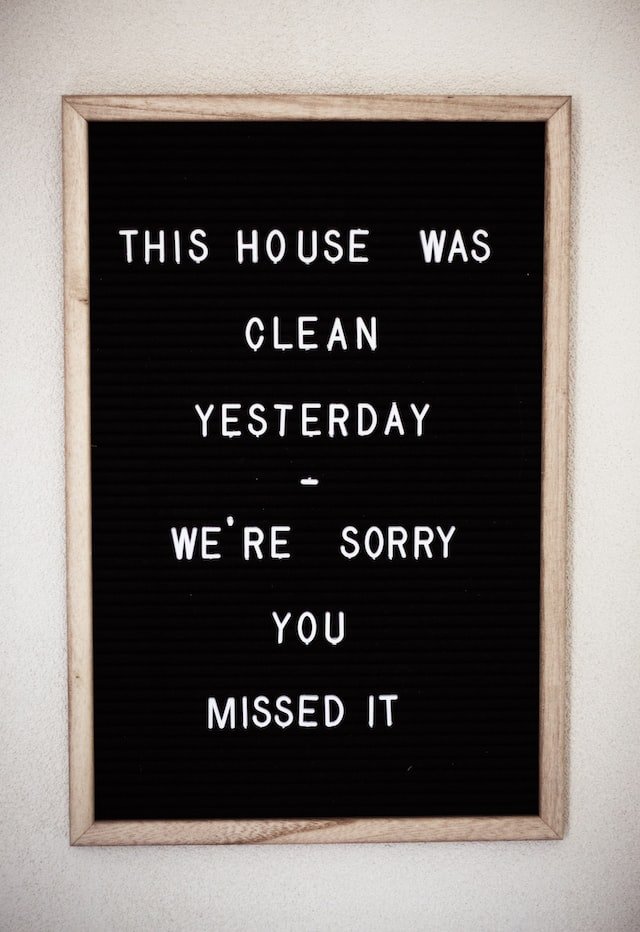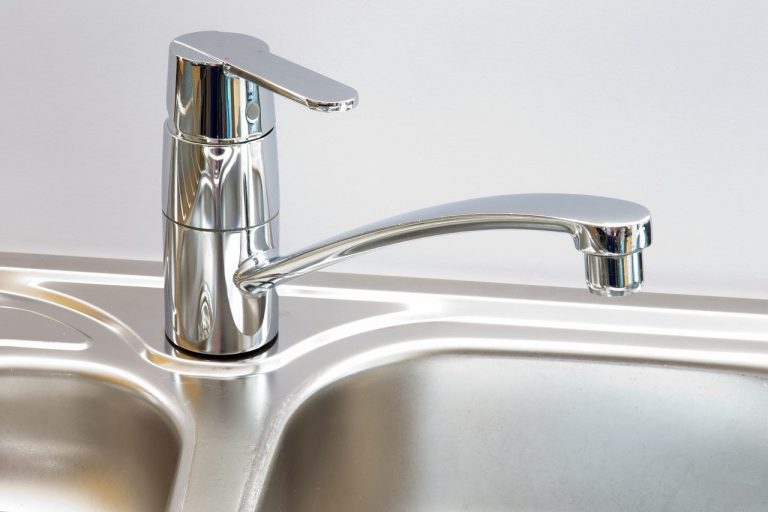Maintaining a Clean Home During Flare-Ups
There are some affiliate links below, but they are all products I highly recommend. For more info, view my disclosure here.
It’s no secret that managing chronic illness can be a challenge. Flare-ups, or periods of increased symptoms, can make it difficult to maintain a clean living space.
But rather than feeling overwhelmed by the task of cleaning during flare-ups, there are strategies that can help make the process easier and less overwhelming. In this article, we’ll discuss how to manage cleaning during flare-ups in order to make day-to-day life more manageable.
Through this article, we’ll explore different strategies and tips for making cleaning during flare-ups more manageable – from breaking down tasks into smaller chunks to utilizing helpful products that make cleaning quicker and easier. By taking the time to plan ahead and prepare for these times of heightened symptoms, you’ll be able to maintain a cleaner space with less stress and effort.
Definition Of Flare-Ups
A flare-up is a period of increased or worsening symptoms from a chronic condition. It can occur with any chronic health issue, including arthritis, fibromyalgia, and Crohn’s disease.
Flare-ups are unpredictable and often cause an increase in physical pain and fatigue as well as emotional distress. Understanding what triggers your flare-ups is a key part of managing them. But sometimes they just seem to happen no matter what we do, right?!
Keeping up with regular cleaning during flare-ups can be challenging due to the additional energy it requires. It is important to prioritize self-care before tackling chores during this time. This includes taking breaks for rest periods and perhaps even asking for help if needed.
It is also important to take into consideration how certain cleaning products may affect your health during a flare-up, such as those containing strong fragrances or harsh chemicals that can irritate allergies or asthma.
Consider using natural products or wearing gloves when doing household cleaning tasks to minimize potential irritation to your skin and lungs.
Preparing For A Flare-Up
It is important to be proactive in order to maintain a clean environment during times of increased symptoms or flare-ups. Preparation is key to keeping an area clean and manageable when dealing with a flare-up. The tips below can help make the process easier:
First, establish a routine cleaning schedule that works best for you and your lifestyle. This could include daily, weekly, or monthly tasks such as vacuuming, dusting, and wiping down surfaces.
Consider designating specific days for deeper cleaning tasks like mopping floors or scrubbing toilets. It may also be helpful to break up larger tasks into smaller ones so they don’t seem so overwhelming.
Since my husband and I both have chronic health issues, we use our Amazon Echo Show to remind us to do certain tasks on specific days. He has alerts set to vacuum, water the plants, clean the toilets, etc, while I have mine set to clean out the fridge before trash day, a reminder to start lunch, things like that.
Having reminders set makes it easier to keep up on routine tasks so they don’t get out of hand if we need to take it easy for a few days if we both happen to have a flare at the same time.
Second, stock up on cleaning supplies ahead of time. Having all the necessary items on hand is essential when it comes to staying on top of your cleaning routine.
Make sure you have enough sponges, paper towels, vacuum bags, cloths, mops and other products that you use regularly. Taking an inventory of what you have will help ensure that you don’t run out of supplies during a flare-up period.
Minimizing Stress During Cleaning
When facing a flare-up, it is important to minimize stress as much as possible. Cleaning can be especially stressful during these times, so it’s important to create a plan that takes into account your physical and mental limitations. The following strategies can help make cleaning during flare-ups more manageable:
First, break down the task of cleaning into smaller, more achievable goals. Instead of trying to clean the entire house at once, focus on one room at a time or set specific tasks for yourself each day. This will help you stay on track without feeling overwhelmed.
Second, plan for breaks throughout the process. Cleaning can be physically and mentally taxing, so it’s important to take regular breaks in order to give your body and mind a chance to rest. Take five minutes here and there throughout the day to sit down or close your eyes and relax.
Finally, find ways to make the process enjoyable if possible. Put on some music or listen to a podcast while you clean; if you have someone helping you out with cleaning, turn it into quality time by talking or catching up with them while you both tackle chores. Doing this can help reduce stress levels and even make completing the task more fun!
Decluttering Before Cleaning
Now that you have a few strategies for managing stress during the cleaning process, it’s time to focus on how to make the cleaning process easier.
Decluttering your space before you begin cleaning can be a great way to streamline the process. This means getting rid of items that are no longer necessary or are taking up valuable space. It also means organizing what is left in an efficient manner so that there is less clutter and more open space to clean.
To start decluttering, begin by discarding any items that you no longer need or use. These could be clothes, books, kitchen gadgets, toys, or anything else that is taking up unnecessary space. Once those items have been removed from your home, then it’s time to organize what remains in an efficient way. Try sorting similar items into labeled bins or drawers and moving them out of the way so they don’t become a distraction as you clean.
Finally, having fewer items around can give your home a much-needed sense of clarity and peace. When everything has its own designated spot and is organized well, it can reduce feelings of stress or overwhelm when tackling housework tasks like cleaning.
Aside from making the task itself easier, this will also leave more room for activities that bring joy and relaxation into your life during flare-ups.
Strategies To Maximize Efficiency
When managing cleanliness during periods of increased symptoms or flare-ups, it’s important to maximize efficiency. There are several steps one can take to make the necessary cleaning tasks more manageable. To begin, create a cleaning plan and schedule.
This will help to break down the tasks into smaller chunks, allowing for more regular maintenance rather than sporadic deep cleans. Additionally, it’s important to keep supplies such as mops, buckets and cleaning solutions close by to minimize time spent searching for them when needed.
One should also consider investing in quality cleaning tools that are easy to use and require minimal effort. For example, using an automated vacuum cleaner or steam mop may be a better option than traditional methods like sweeping or mopping manually.
I swear by our Shark Steam Mop! I used a Hoover Floormate previously, and while it was helpful, I always found I was exhausted when it came time to clean the machine, and it was a bit bulky to push around.
My steam mop is lightweight, I can push it around easily, and there’s no cleanup after except for taking off the pad and tossing it in the washing machine. Plus, I like cleaning with steam over chemicals added to the Floormate.
When possible, enlist the help of family members or roommates. Sharing the workload can make a big difference in terms of keeping up with cleanliness during flare-ups or periods of increased symptoms.
Having a consistent plan in place can help ensure that cleanliness is maintained even during times when symptoms worsen. Taking these steps will provide peace of mind knowing that surfaces are free from germs and allergens while minimizing physical exhaustion from extended cleaning sessions
Appropriate Tools And Supplies
Maintaining cleanliness during flare-ups can be challenging, but there are certain tools and supplies that can help make the process easier. Having the appropriate supplies on hand ensures that cleaning is done safely, effectively, and with minimal disruption to daily life.
The following outlines some of the necessary materials for successful cleaning during periods of increased symptoms or flare-ups.
A good place to start is to stock up on cleaning solutions specifically designed for those with allergies or sensitivities. It’s important to choose products that are mild yet effective enough to remove dirt and grime without causing any additional irritation or discomfort.
It’s also a good idea to use non-toxic and biodegradable materials whenever possible. Vinegar is a perfect go-to for many cleaning jobs!
In addition to cleaning solutions, it’s helpful to have other items such as microfiber cloths, dust pans, brooms, mops, vacuum cleaners, sponges, brushes, rubber gloves and protective masks.
Having these items readily available ensures that you’re prepared for any type of mess or cleanup job that might arise during flare-ups. These tools also allow you to clean quickly and efficiently without having to worry about aggravating your symptoms further.
By stocking up on the right supplies and maintaining a regular cleaning routine during periods of increased symptoms or flare-ups, you can ensure that your home stays clean and safe while minimizing discomfort from allergies or sensitivities.
With the right tools in hand and a bit of planning ahead of time, keeping your home clean during flare-ups doesn’t have to be an overwhelming task. And hey, if you need to take a break for a few days, you’ll know the house won’t fall apart! And if company decides to stop by, just put up a sign like this!

Tips For Maintaining Sanitation
Maintaining cleanliness during flare-ups can be difficult, but it pretty important. Keeping a clean environment helps reduce the chances of further medical issues and can help lessen symptoms while they are occurring. Plus, looking around at a ton of clutter and dirtiness is bound to make anyone feel more stressed, and we all know what stress does to the body.
The first step is to create a plan for when and how often to clean. Set a schedule that works best for you and your lifestyle, but make sure it is consistent.
For example, if you know your flare-ups occur in the evening, schedule all cleaning activities for the morning before your symptoms start to appear. This will ensure that you have time to rest when needed. Just don’t overdo it!
Additionally, designate certain tasks to family members or roommates if possible so that the burden of cleaning does not fall solely on one person.
Cleaning during periods of increased symptoms or flare-ups requires careful planning and preparation, but it is an important part of keeping oneself healthy and safe during these episodes.
Finding a routine that works best for you and implementing tools designed with people with chronic illnesses in mind can make this process easier while still providing a safe environment free from contaminants and irritants
Dealing With Laundry During A Flare-Up
During a flare-up, laundry can become a challenge. It is important to have strategies for managing laundry during these times in order to maintain cleanliness and reduce stress.
The first step is to separate clothing into piles – one for items that need to be washed immediately, and one for items that can wait until the flare-up ends.
When folding clothes, it’s important to take frequent breaks and rest when necessary. Be sure not to over-exert yourself while doing any task related to laundry.
It’s also beneficial to delegate tasks if others are available. Ask another family member if they can help out by taking on some of the laundry duties during this time of increased symptoms or flare-ups. This will help lighten the load and allow you more time to focus on self-care activities such as getting enough rest and drinking plenty of fluids throughout the day.







